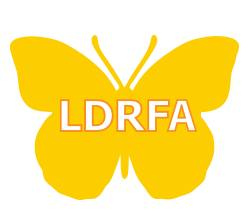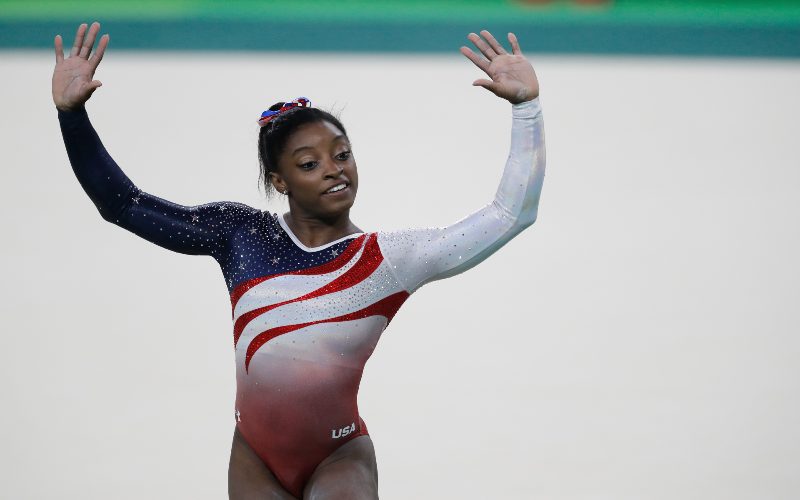In the world of gymnastics, few names shine as brightly as Simone Biles. With a record-breaking 19 World Championship medals and four Olympic gold medals, Biles has redefined what’s possible in her sport. But behind her awe-inspiring flips and seemingly impossible feats of athleticism lies a lesser-known story – one of perseverance, self-acceptance, and the transformation of a perceived weakness into an extraordinary strength.
Table of Contents
ToggleSimone Biles was diagnosed with Attention Deficit Hyperactivity Disorder (ADHD) as a child. For many, such a diagnosis might be seen as a roadblock to success, especially in a sport that demands intense focus and discipline. However, Biles chose a different path. Instead of viewing her ADHD as a hindrance, she harnessed its traits to fuel her gymnastics career, turning potential challenges into her secret weapon.
Understanding ADHD
Before delving into Biles’ journey, it’s crucial to understand what ADHD entails. Attention Deficit Hyperactivity Disorder is a neurodevelopmental condition characterized by persistent inattention, hyperactivity, and impulsivity that interferes with functioning or development. Common traits include difficulty focusing on tasks, restlessness, impulsive behavior, and challenges with organization and time management.
Individuals with ADHD often face obstacles in traditional learning environments and structured activities. They may struggle to sit still for long periods, follow complex instructions, or maintain focus on tasks they find uninteresting. These challenges can be particularly daunting in a sport like gymnastics, which requires precise movements, intense concentration, and adherence to strict routines.
However, ADHD isn’t just about deficits. Many individuals with ADHD possess unique strengths, including creativity, high energy levels, the ability to hyperfocus on subjects of interest, resilience, and out-of-the-box thinking. When channeled effectively, these traits can become powerful assets.
Biles’ Journey with ADHD
Simone Biles was diagnosed with ADHD at a young age. Like many children with the condition, she initially faced challenges in school and in her early gymnastics training. The structured environment of the gym, with its emphasis on repetition and precise technique, could have been a significant hurdle for someone with ADHD.
However, Biles and her support system, including her family and coaches, made a crucial decision. Rather than viewing her ADHD as a limitation, they chose to explore how its traits could be leveraged in her gymnastics career. This shift in perspective would prove to be transformative.
0:00 / 9:40
Video: Simone Biles Medical Info Leaked, Revealing ADHD Diagnosis
Harnessing ADHD Traits in Gymnastics
As Biles progressed in her gymnastics career, she began to recognize how certain ADHD traits could be advantageous in her sport. Here’s how she turned potential challenges into strengths:
Hyperfocus and Intense Concentration
While individuals with ADHD often struggle with maintaining attention, they can also experience periods of hyperfocus – an intense, single-minded concentration on tasks they find engaging. Biles learned to channel this hyperfocus during her routines, allowing her to block out distractions and perform with remarkable precision.
In high-pressure situations, such as Olympic finals, this ability to hyperfocus became invaluable. While others might buckle under the weight of expectations and the roar of the crowd, Biles could enter a state of intense concentration, focusing solely on her routine.
Physical Restlessness
The high energy levels and physical restlessness often associated with ADHD became assets in Biles’ rigorous training regimen. Gymnastics demands incredible stamina and the ability to train for long hours. Biles’ natural energy reserves allowed her to push through grueling practice sessions and maintain high intensity throughout competitions.
Creativity and Thinking Outside the Box
People with ADHD often excel at thinking creatively and approaching problems from unique angles. In gymnastics, this trait translated into Biles’ ability to envision and execute moves that others hadn’t even considered possible.
Her innovative approach to the sport has led to her having multiple skills named after her – a rare honor in gymnastics. The “Biles” on floor exercise and vault, and the “Biles II” on balance beam, are testaments to her creative thinking and willingness to push boundaries.
Resilience and Adaptability
Living with ADHD often requires developing resilience and adaptability to overcome daily challenges. Biles brought these qualities to her gymnastics career, demonstrating an remarkable ability to bounce back from setbacks and adapt to new situations.
Whether facing injuries, changes in competition formats, or the unprecedented challenges of a global pandemic, Biles has shown an extraordinary capacity to adapt and persevere.
Leveraging ADHD for Better Results
Perhaps the most iconic example of how Biles has leveraged her ADHD traits is in the development of her signature move, the “Biles.” This move, a double-twisting double backflip, was considered nearly impossible before Biles performed it.
The creation of this move required not just physical prowess, but also the kind of innovative thinking that Biles’ ADHD may have facilitated. She had to envision a movement that others couldn’t see, break it down into its components, and then put in the countless hours of practice required to make it a reality.
The energy and hyperfocus associated with ADHD likely played a crucial role in this process. Biles’ ability to maintain intense concentration during repetitive practice sessions, combined with her natural creativity, allowed her to push the boundaries of what was thought possible in gymnastics.
Maintaining Focus During High-Pressure Olympic Performances
The Olympic Games represent the pinnacle of athletic competition, with millions of viewers and immense pressure. For many athletes, this environment can be overwhelming. However, Biles has consistently delivered stellar performances on this global stage.
Her ability to maintain focus amidst chaos is a testament to how she’s harnessed her ADHD. The same trait that might cause distraction in a classroom setting became an asset in the gym, allowing her to tune out the crowd, the cameras, and the pressure, focusing solely on her routine.
Adaptability in Training and Competition Environments
Gymnastics requires adaptability. Competitions can be held in various venues, each with its unique characteristics. Training conditions can change, and unexpected challenges can arise. Biles’ ADHD-influenced adaptability has allowed her to thrive in these changing conditions.
Whether it’s adjusting to a new training regimen during the COVID-19 pandemic or quickly adapting to different equipment at international competitions, Biles has demonstrated an exceptional ability to adjust and excel in various environments.
Biles as an Inspiration
By openly discussing her ADHD and demonstrating how she’s turned it into an asset, Biles has become an inspiration far beyond the world of gymnastics. She’s helping to break down stigmas associated with ADHD and other neurodevelopmental conditions.
Biles’ success sends a powerful message: neurodiversity is not a barrier to achievement. Instead, it can be a source of unique strengths and abilities. Her story encourages others with ADHD to embrace their traits and explore how they can be channeled into areas of passion and excellence.
Biles’ journey promotes the importance of neurodiversity in sports and other competitive fields. Her success demonstrates that there’s no one-size-fits-all approach to achievement and that individuals with diverse neurological makeups can bring valuable perspectives and abilities to their chosen pursuits.
The Bigger Picture: ADHD in Sports
Simone Biles is not alone in leveraging ADHD traits for athletic success. Many other athletes have excelled while managing ADHD, including Olympic swimmers Michael Phelps and Cullen Jones, and NFL players like Terry Bradshaw and Howie Long.
These success stories highlight how sports can be a positive outlet for individuals with ADHD. The structure of athletic training, combined with the physical outlet and the opportunity to hyperfocus on areas of interest, can be highly beneficial for many people with ADHD.
However, it’s crucial to note that success stories like Biles’ are not just about individual effort. They also underscore the importance of proper support and understanding in athletic environments. Coaches, teammates, and sporting organizations need to be educated about ADHD and other neurodevelopmental conditions to create inclusive environments that allow all athletes to thrive.
Conclusion
Simone Biles’ journey from an ADHD diagnosis to becoming one of the greatest gymnasts of all time is a powerful testament to the potential within neurodiversity. By reframing the traits associated with ADHD and channeling them into her passion for gymnastics, Biles didn’t just overcome a challenge – she created a superpower.
Her story serves as an inspiration not just for individuals with ADHD, but for anyone who’s ever felt limited by a diagnosis or a perceived weakness. Biles shows us that our unique neurological makeup, whatever they may be, doesn’t have to hold us back. Instead, they can be the very things that set us apart and drive us to unprecedented heights.
As we marvel at Biles’ gravity-defying routines and record-breaking achievements, we’re not just witnessing athletic excellence. We’re seeing the power of embracing one’s whole self – challenges, differences, and all. In flipping the script on ADHD, Simone Biles hasn’t just changed her own story; she’s opening up new possibilities for how we view neurodiversity in sports and in life.
For those living with ADHD or other neurodivergent conditions, Biles’ message is clear: your unique brain isn’t a roadblock – it might just be your greatest asset. The key lies in understanding your traits, finding your passion, and channeling your energy in ways that work for you. In doing so, you too might discover your own superpower, ready to help you soar to new heights.


